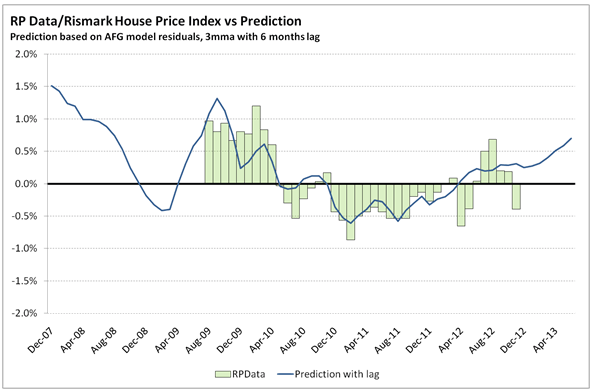
Please find below analysis from Nathan Webb on the December AFG housing finance data released last week.
It was another good month for AFG, with December figures coming in at 5912 versus expectations of 5262. This continues the trend that has been building up throughout 2012, and provides a good indication that house prices will appear to rise in the first half of 2013.
The following charts begin by making an adjustment for the number of trading days in each month, and using the difference above or below the average to predict changes in house prices. That is, when mortgage sales in any given month, adjusted for the number of trading days in that month, are above average, then you can expect prices to rise.
The first chart shows the overall view, with the bars showing the actual volumes, and the red line indicating where they should have been after adjustments. You can see in the most recent months that the green bars (Actuals) are starting to get a bit ahead of the red (Predicted). It’s not quite 2007 again, but it’s getting there.
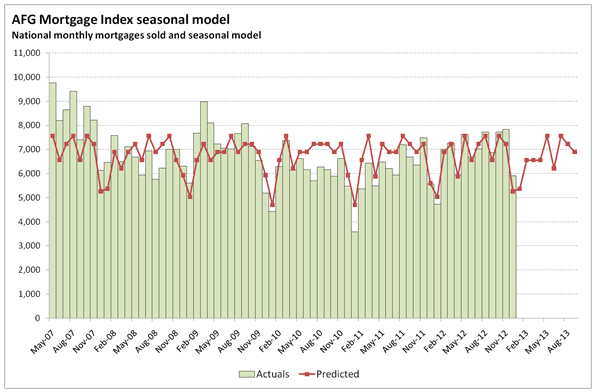
The next chart plots the difference between the two lines, referred to as the “residuals”. This chart shows that after being pretty much at zero for the most of 2012, mortgage sales are now strongly in the positive, and well off the lows of 2010.
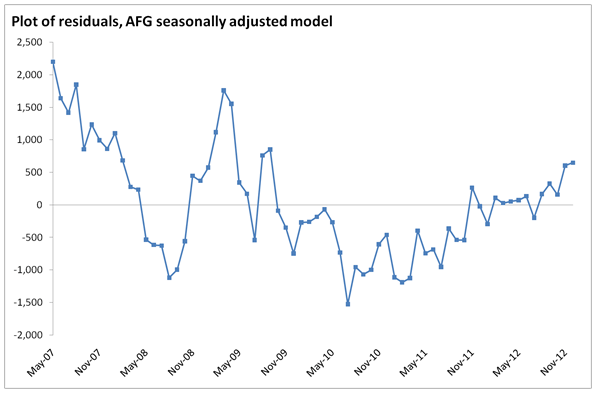
There’s been a lot of discussion recently about the impact of first home buyers on the overall market, particularly focused on the recent withdrawal of FHB grants in several states. A popular suggestion is that first home buyers drive the market by providing new blood, allowing prices to move higher. Recent months have seen these grants removed for purchasers of established houses in NSW and QLD. When you combine that with prices that are out of the reach for many, does that mean that first home buyers are on strike? The next chart shows the AFG percentage of first home buyers compared to the Residuals. And what’s the verdict? Well, it may not be a strike, but if I were a mortgage broker, I would be a bit concerned at the direction it’s going. How much longer will investors prop up the market by themselves?
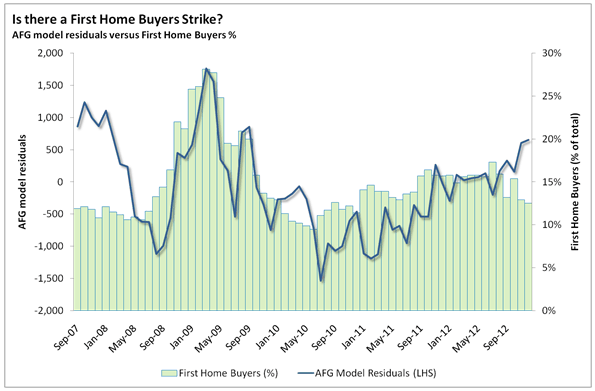
But, for the moment, mortgage sales continue to climb. As long as that continues, then prices will appear to be rising as well. I say, “appear”, as the house prices reported today are based on sales that have taken place over the last few months, not from sales that occur today.
The chart of the residuals can be used to get an idea of where reported prices are heading. Firstly, they are compared to SQM’s stock on market report, where there is a very strong negative correlation. The third chart shows this, with the residual inverted and laid over the top of the change in Stock on Market. I’ve used the 3 month moving average to smooth things out. The AFG results lead the 3mma by 1 month. The chart is showing that after a period of stability, expect falls in the stock on market over the next couple of months. But as mentioned last month, we’re also seeing a divergence here, so this will be something to watch. It’s happened before, but only temporarily. If they’re still going in opposite directions by March 2013, then it might indicate a breakdown in any historical relationships.
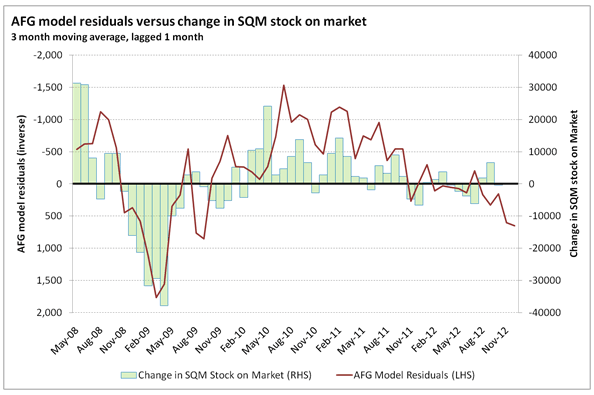
Finally, the last chart shows the correlation with the RP Data house prices series. I’ve used the 3 month moving average, as there is a lot of volatility in the new daily series. This lags the AFG volumes by around 6 months, so the current strength in the Residuals won’t actually show up in any price action for a few months yet. By the middle of the year, the prediction is for growth of around 7% p.a. At that rate, there would surely have to be some pressure on the RBA to put a lid on things.
